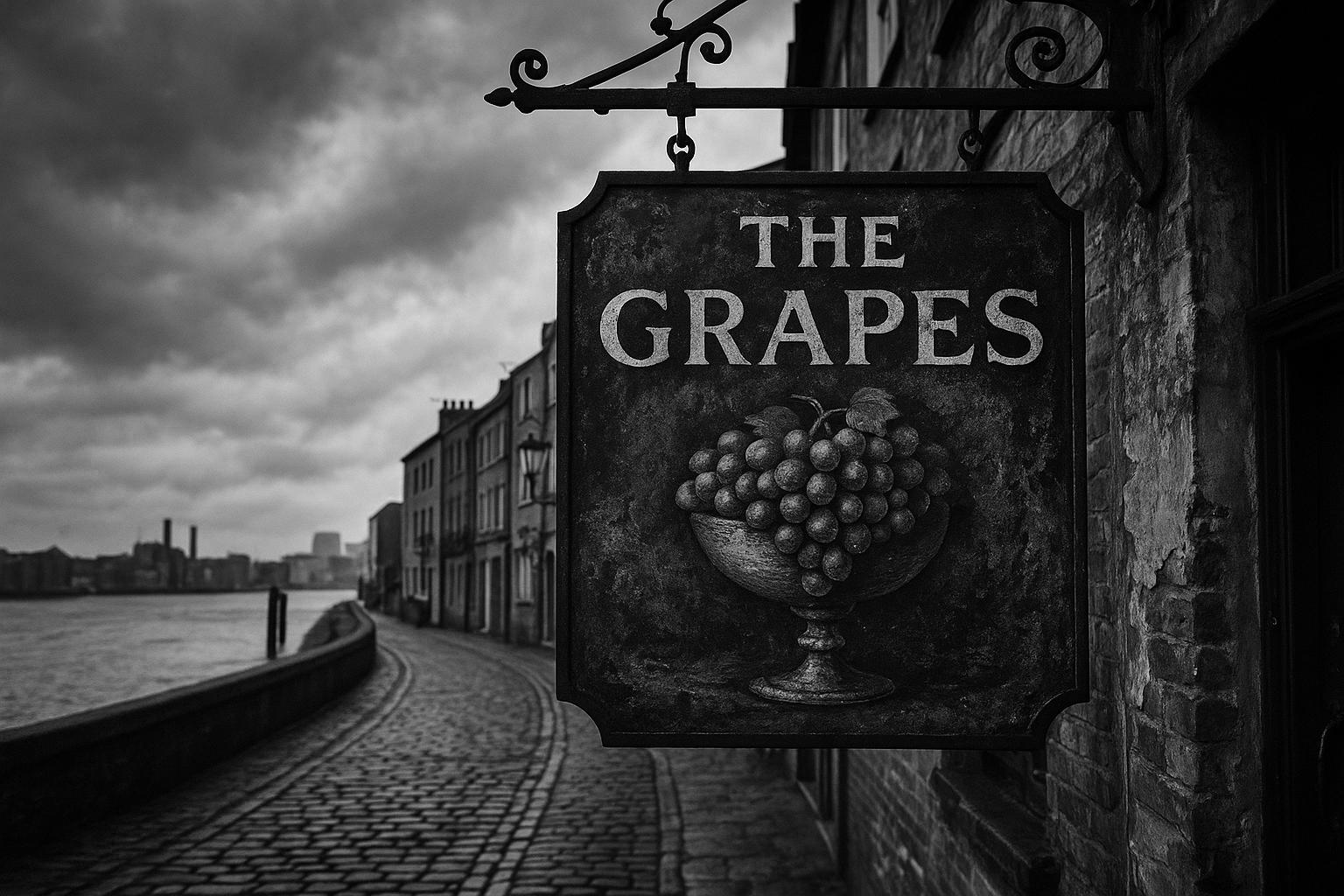Tucked away along the quieter stretches of the Thames in London’s East End, two historic pubs fiercely vie for the unofficial title of the city’s oldest riverside tavern: the Mayflower in Rotherhithe and the Prospect of Whitby in Wapping. Each establishment embodies a rich tapestry of history and maritime lore, drawing visitors who seek to step back in time amid the clinking glasses and candlelit interiors characteristic of traditional British public houses.
The Mayflower pub, named after the legendary ship that set sail in 1620 carrying the Pilgrim Fathers to America, makes a poignant claim to history, incorporating parts of the original ship’s timbers into its structure. Located on cobblestone streets beside a decked jetty, it offers patrons not just classic British fare such as steak and ale pie and sticky toffee pudding, but also a direct connection to history. Visitors who can trace their lineage back to Mayflower passengers are invited to sign the pub’s “Descendants Book,” making it a unique pilgrimage for those with Pilgrim heritage. The pub honours its connection to the ship with the preserved mooring point where the Mayflower was originally berthed.
Across the river, the Prospect of Whitby stakes its claim to antiquity with origins stretching back to around 1520, making it arguably older than the Mayflower. Despite changing names—from The Pelican to the Devil’s Tavern, a nod to its notorious association with smugglers, thieves, and pirates—the Prospect has been a continual fixture in London’s maritime folklore. It survived the Great Fire of London in 1666 thanks to its position outside the city limits at the time, and was subsequently rebuilt in 1774 using the hull of a retired merchant ship named The Prospect. This storied past is preserved in the pub’s 400-year-old stone floor, its extensive nautical memorabilia, and the longest pewter bar in Britain, where the notorious “Hanging Judge Jeffreys” reportedly observed executions at the nearby Execution Dock, although the actual gallows were slightly farther afield. Today, the hanging noose displayed outside commemorates this grim chapter, adding to the pub’s aura as a “pocket of history” in London’s rapidly changing East End.
Despite their competing claims—rooted in continuous operation, structural remnants, and historical ties—neither pub has been officially recognised by Guinness World Records as London’s oldest. The complexity arises from centuries of rebuilding, name changes, and shifting municipal boundaries, which blur clear lines of continuity. Historians, such as English author Jacob Field, note the difficulty in pinning down any single establishment as truly the oldest, especially when considering factors like reconstructions and the evolution of London’s city limits.
Both pubs play a vital role in preserving London's cultural heritage, especially at a time when the pub industry faces significant challenges. The British Beer and Pub Association reports that hundreds of pubs across the UK are closing annually, affected by economic pressures and the lingering impacts of the COVID-19 pandemic. Pubs like the Mayflower and the Prospect of Whitby not only serve as social hubs but also as custodians of history, attracting locals and tourists alike who seek authentic connections to London’s past.
Visitors to these riverside haunts emerge from the shadow of the capital’s gleaming skyscrapers into atmospheres resonant with stories of sailors, smugglers, and historical figures. The enduring “loving rivalry” between the Mayflower and the Prospect, described by the Prospect’s assistant manager Justin Billington, is less about definitive claims and more about celebrating their shared heritage and commitment to offering the best in traditional food and drink.
This rivalry, entwined with centuries of maritime history, reflects a broader narrative about the importance of preserving London's historic pubs as vital community institutions. While neither the Mayflower nor the Prospect of Whitby can claim an undisputed title as London’s oldest riverside pub, both undoubtedly offer quintessentially British experiences steeped in history, charm, and tradition.
📌 Reference Map:
- Paragraph 1 – [1], [2], [4]
- Paragraph 2 – [1], [3], [7]
- Paragraph 3 – [1], [4], [6]
- Paragraph 4 – [1], [2], [6]
- Paragraph 5 – [1], [2]
- Paragraph 6 – [1], [2]
Source: Noah Wire Services
